Not unlike some humans, some plants look their best naked. For example, stripped of its deciduous leaves, its curling bare branches exposed with the arrival of late autumn, the contorted hazel (Corylus avellana ‘Contorta’) is a thing of pared-back beauty. Even more so in early spring, when those still-bare, sculptural branches are laden down with dangling gold-green catkins. But look at the same plant in summer and you’d be forgiven for wondering if it was suffering from some odd disease, so strangely deformed do its contorted leaves appear.
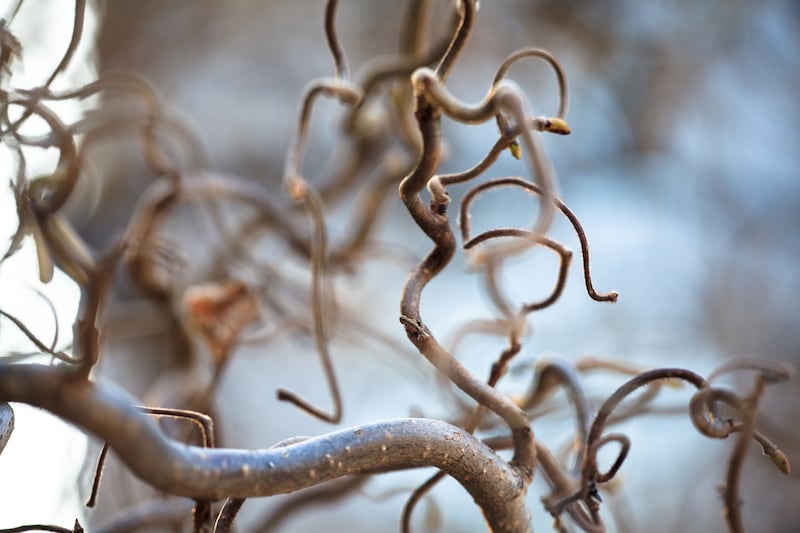
It’s a similar story for the corkscrew willow (Salix ‘Erythroflexuosa’) and the dragon’s claw willow (Salix babylonica var. pekinensis ‘Tortuosa’), two ornamental trees whose spiralling branches look oddly artificial in full summer leaf (think ‘tree with a perm’) but starkly beautiful in their winter bareness.
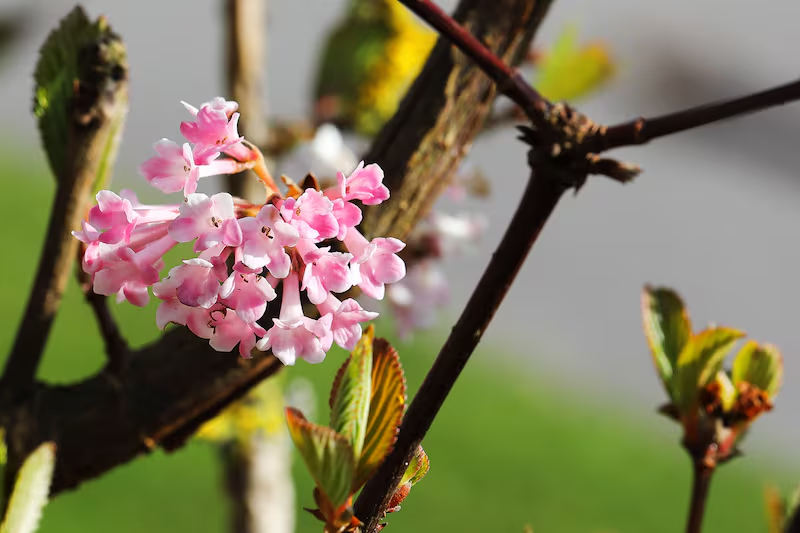
Likewise, when in full summer leaf the deciduous shrub known as Viburnum x bodnantense appears a very ordinary plant with little to recommend it. It’s neither particularly graceful in growth habit, for example, nor is it possessed of especially handsome foliage. But see the same shrub on a dark, drab day in full winter flower when its dense network of bare twiggy branches are studded with clusters of intensely-scented pale-pink flowers and it’s hard to take your eyes off it, a good example of why it’s always worth waiting an entire growing year before deciding to remove any plants from an established garden that you’ve only recently acquired.
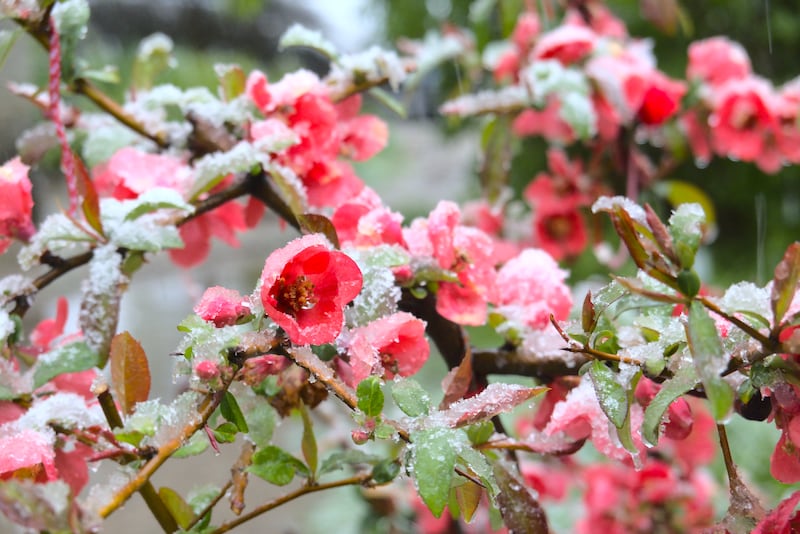
In much the same way, you could be excused for wondering why anyone would bother to grow flowering quince (Chaenomeles) were you to judge it solely by its summer clothing. Inelegant in growth habit and with nothing to distinguish its foliage in terms of leaf shape or colour, its appearance is – to quote Mr Darcy’s snooty first impressions of Elizabeth Bennett in Pride and Prejudice – “tolerable, but not handsome enough to tempt me”. But this plant is an entirely different creature in mid-spring, when its still-naked, thorny branches are lit up with graceful, cup-shaped flowers, transforming it into the angular, bare-boned beauty that has long been celebrated by artists and adored by florists.
READ MORE
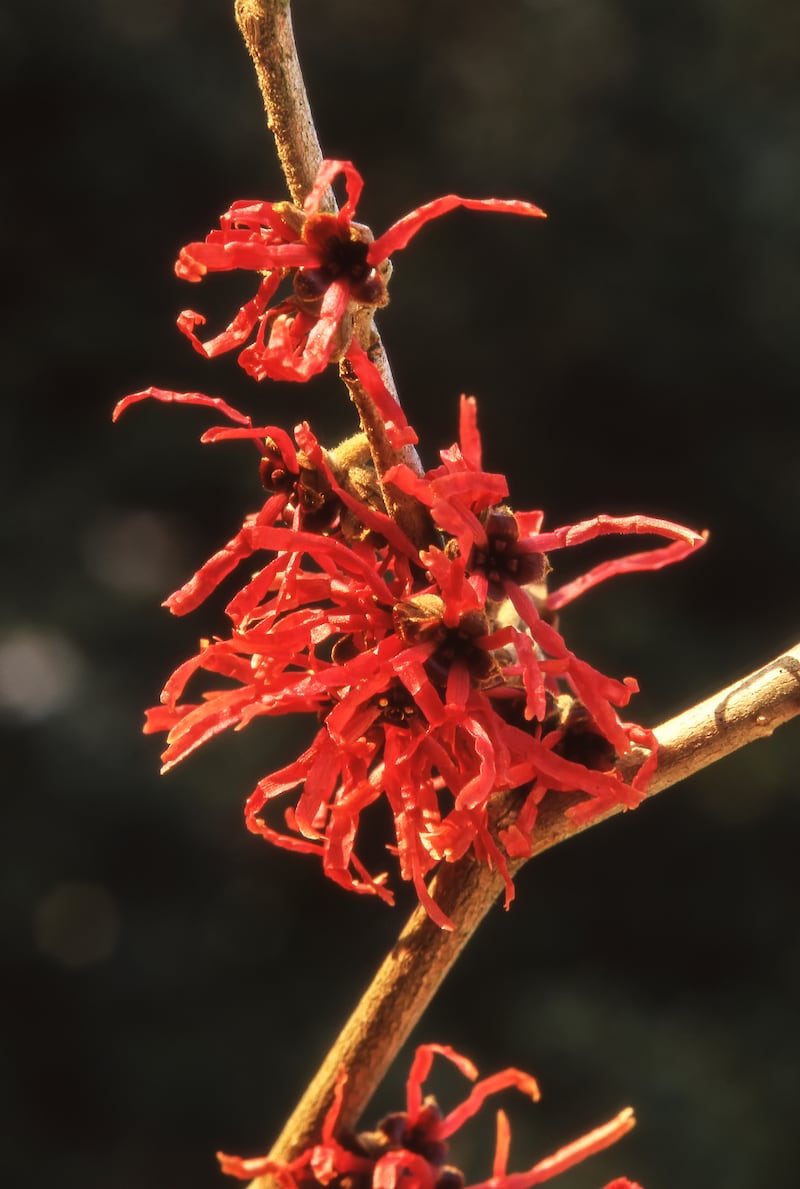
Much the same goes for witch hazel (Hammamelis), winter-flowering honeysuckle (Lonicera x purpusii, Lonicera fragrantissima), white forsythia (Abeliophyllum distichum) and wintersweet (Chimonanthus praecox), all winter-flowering or very early spring-flowering deciduous shrubs that are the frumps of the summer garden, revealing their finery only in the shortest, darkest days of the year.
It’s also true of certain woody, deciduous shrubs whose loveliest feature – their fiercely colourful stems in shades of red, orange, yellow, purple and citrus-green – is concealed when in summer leaf. Examples include the winter dogwoods (Cornus alba ‘Sibirica’, Cornus sericea ‘Flaviramea’, Cornus sanguinea and Cornus alba ‘Kesselringii’) as well as certain varieties of willow (examples include Salix alba var. vitellina ‘Britzensis’, Salix purpurea ‘Gracilis and Salix alba ‘Chermesina Flame’). Instead, it’s only when these plants’ leaves start to colour up in autumn and then drop that the seasonal theatre begins, transforming them from very ordinary shrubs into something strikingly beautiful.
Other deciduous shrubs and trees have a particularly enviable quality (again, much like certain fortunate humans) of looking good no matter what they’re wearing. Species that look lovely in summer leaf but are equally prized for their stripped-back, wintry good looks include many kinds of birch (Betula); the Tibetan cherry (Prunus serrula); the winter-flowering cherry (Prunus subhirtella ‘Autumnalis’); many kinds of maple (examples include Acer pensylvanicum ‘Erythrocladum’, Acer griseum, Acer davidii, Acer palmatum ‘SangoKaku’); Persian ironwood (Parrotia persica); deciduous camellia (Stewartia pseudocamellia); Chinese stewartia (Stewartia chinensis); the kousa dogwood (Cornus kousa), the Cornelian cherry (Cornus mas) and the Seven Sons plant (Heptacodium miconioides). All are hardy, woody plants with either very ornamental bark – some colourful, others peeling, fissured or richly textured – and/or with delicate winter or very early spring blooms that light up the garden at that time of the year when their more subtle charms can shine most brightly. The moral of this particular story? Don’t judge a plant by its cover.
Five great ‘naked’ trees or shrubs for the winter garden
Birch ‘Fascination (Betula albosinensis ‘Fascination’): Many different species/varieties of birch provide valuable year-round interest in the garden but this is one of the very best with its peeling, papery, creamy white-pink bark flecked with orange and brown and its spring display of dangling yellow-brown catkins. Very hardy, happy in sun or light shade and tolerant of most soils, it reaches an average height and spread of eight metres by four metres.
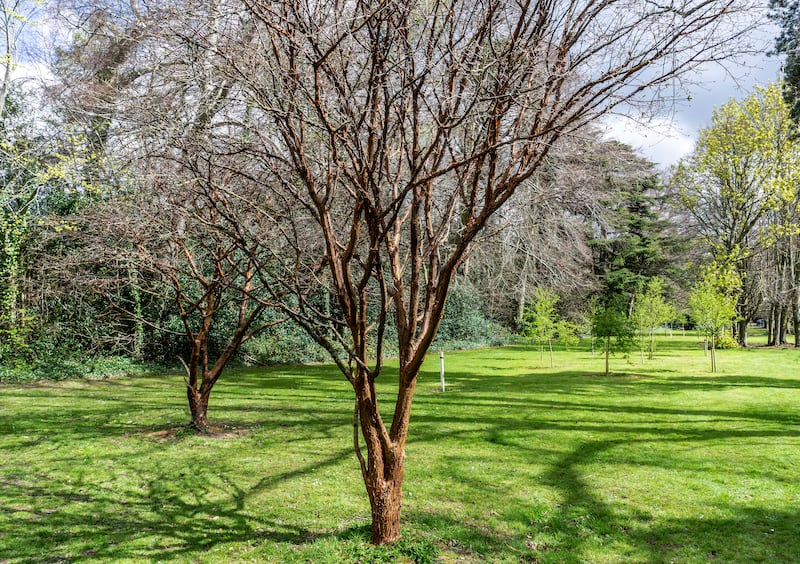
Paperbark maple (Acer griseum): A gardening classic for a reason, this small, slow-growing, spreading tree looks as lovely in winter as it does in summer. One of its most outstanding features is its decoratively mottled, peeling, cinnamon-brown, papery bark that demands to be stroked and admired. Very hardy, happy in sun or light shade and in a moist but free-draining soil, it reaches an average height and spread of 10m.
Stachyurus (Stachyurus praecox): Rarely seen in Irish gardens, this unusual hardy shrub starts flowering in late winter with a magnificent display of its racemes of creamy-yellow, pollinator-friendly flowers that dangle from the plant’s bare, purple-red branches. Great in a border or trained against a wall, it needs a moist but free-draining, humus-rich, acidic soil and a sheltered position in full sun or light shade. Height and spread of three metres.
Chinese stewartia (Stewartia chinensis): Not as well-known as its Korean cousin Stewartia pseudocamellia, this large spreading shrub or medium-sized tree is prized for its sinuous growth habit and beautifully mottled bark, which the late, great British botanist and plantsman WJ Bean vividly described as being “in its summer conditions, as smooth as alabaster and the colour of weathered sandstone before in autumn it turns purple, later brown, and peels away in translucent scrolls, exposing the fresh inner coating”. Eventual height and spread of 12m by eight metres.
Hamamelis x intermedia ‘Livia’: An outstanding variety of witch hazel, its rusty-red, deeply perfumed, crumpled flowers appear in profusion on the bare stems of this hardy, deciduous, slow-growing shrub from December-March. Great for a mixed shrub border, it can also be trained as a wall shrub or grown in a large container with its spreading growth habit kept in check by careful training and pruning in late spring after it’s finished flowering. As is true of all witch hazels, it needs a cool, moist but well drained, humus-rich, neutral to acid soil in light shade. Height and spread (if left unchecked) of three metres.
This week in the garden
Now that bare-root season has properly kicked off, it’s a great time to source many kinds of young plants far more affordably than if they were container-grown specimens. Order soon while stocks are still high to give yourself the widest choice. Recently purchased bare-root plants should always be stored carefully in a cool but frost-free, dark place with their vulnerable root systems either temporarily footed into the ground or wrapped in an old, damp towel or plastic bag to stop them from drying out until you’re ready to plant them. Bare-root plants are available from most good garden centres as well as to order online from recommended specialist suppliers such as Dublin-based mrmiddleton.com and Cork-based futureforests.ie
The beginning of the bare root season also means that it’s also a great time of the year to take hardwood cuttings of deciduous trees, shrubs and fruit bushes including roses, philadelphus, buddleia, elder, cornus, forsythia, jasmine, vitis, honeysuckle, willow, currants, gooseberry and mulberry. Typically taken at about 15-30cm long, and roughly the thickness of a pencil, hardwood cuttings can be inserted into pots or into shallow trenches in a bright, free-draining spot in the garden, and will usually take several months to begin to establish viable root systems.
Date for your diary
Saturday, November 12th, 2pm-3.30pm, National Botanic Gardens, Glasnevin, Dublin 9, afternoon lecture on The Delights of Gardening, by Paul Maher and Edel McDonald, with the Irish Garden Plant Society, admission free, see botanicgardens.ie
















